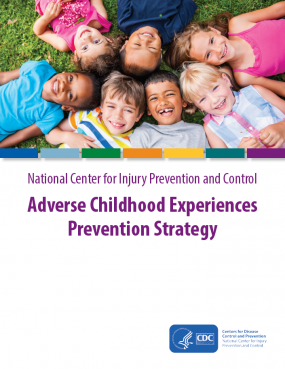Adverse Childhood Experiences
Every child has immense potential for health, wellbeing, and contribution. CDC is committed to building systems and communities that nurture development, and to ensuring that every child has the same opportunity to thrive. By investing in the potential of all children and supporting their families and their communities, we can prevent ACEs before they happen, and buffer the risk of harm when they do happen. When we prevent ACEs, we also prevent later involvement in violence, substance use, depression and suicidal behavior, along with other health challenges like cancer, diabetes, and heart disease. We believe that all children deserve the best chance at lifelong health and wellbeing, and that preventing, identifying, and responding to ACEs is our most powerful tool to achieve this.
In order to create the conditions for strong, thriving families and communities where children and youth are free from harm and can achieve lifelong health and wellbeing, the CDC is committed to:
- Preventing Adverse Childhood Experiences (ACEs) before they happen
- Identifying those who have experienced ACEs
- Responding to them using trauma-informed approaches to lessen future harms of ACEs
To advance this goal, the National Center for Injury Prevention and Control has outlined four key goals.
-
Support ACEs surveillance and data innovation
- Enhance ACEs surveillance in connection to other types of injuries, including suicide and overdose, to monitor trends over time
- Support the collection of more complete and recent ACEs surveillance data
- Pursue innovation in identifying and understanding positive childhood experiences (PCEs)
- Support data collection efforts to inform the implementation and evaluation of prevention strategies
-
Expand what we know about evidence-based ACEs prevention and PCE promotion
- Support research and evaluation of evidence-based prevention strategies to prevent ACEs, their impact, and how to scale effective strategies for broader impact
- Understand the links between ACEs and other forms of violence and injury, including suicide and overdose
- Deepen our understanding of how ACEs disproportionately affect certain populations
- Translate ACEs prevention research into policies, programs, and practices for action, building upon our own research and that from partners, such as Injury Control Research Centers (ICRCs)
- Support research and evaluation of evidence-based approaches to generating resilience in individuals, families, and communities
-
Build local, state, tribal, and key partner capacity
- Provide targeted, culturally appropriate trainings and technical assistance to funded programs and Tribal initiatives
- Disseminate lessons learned and recommendations for best practices and emerging challenges implementing comprehensive ACEs prevention and response strategies
- Align ACEs programmatic strategies among partners
-
Increase awareness and understanding among key partners
- Provide the best available evidence and practices for promoting safe, stable, and nurturing relationships and environments for children and families to key partners, including: public health systems, health care providers, mental health care providers, legal and criminal justice systems, education and early childhood systems, ICRCs; Core SVIPP programs; Tribal initiatives
- Work with partners to leverage resources, align messages, and strengthen collective impact
Preventing ACEs: Leveraging the Best Available Evidence [PDF – 3 MB]
